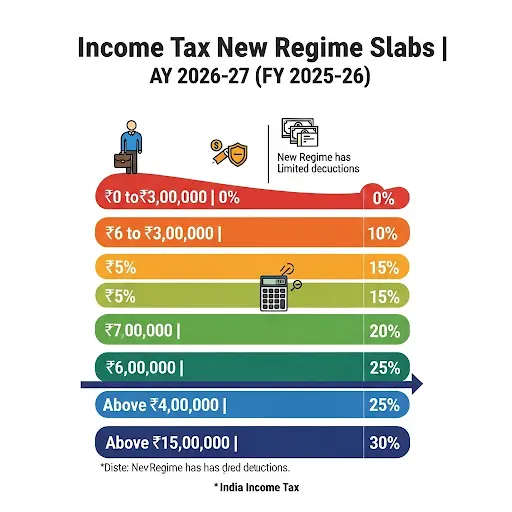Old vs New Tax Regime: Which is Better in FY 2024-25 (AY 2025-26)
Opting of right tax regime has become a crucial part of financial planning for individuals in India. With two tax structures available — the Old Tax Regime and the New Tax Regime — taxpayers often confused which one helps them save more.
In this article, we compare both regimes, including the latest tax slabs for FY 2024–25,(AY 2025-26) examples, pros and cons, and who should choose which regime.
Old Tax Regime – With Deductions and Exemptions
The Old Tax Regime allows taxpayers to claim various deductions and exemptions to reduce taxable income. These include:
- Section 80C – Investments in PPF, ELSS, LIC, EPF (up to ₹1.5 lakh)
- Section 80D – Medical insurance premiums
- HRA – House Rent Allowance for salaried individuals
- Housing loan interest and education loan interest.
- LTA, Standard Deduction (₹ 50,000), and more
Old Regime Income Tax Slabs for FY 2024–25(AY 2025-26)
| Income Slab (₹) | Tax Rate |
| Up to ₹2,50,000 | Nil |
| ₹2,50,001 – ₹5,00,000 | 5% |
| ₹5,00,001 – ₹10,00,000 | 20% |
| Above ₹10,00,000 | 30% |
Note: Senior citizens and super senior citizens have higher basic exemption limits.
New Tax Regime – Lower Rates, No Major Deductions
The New Tax Regime, introduced in Budget 2020 and revamped in Budget 2023, offers lower tax rates. However, most exemptions and deductions (except standard deduction) are not allowed.
New Regime Tax Slabs for FY 2024–25(AY 2025-26)
| Income Slab (₹) | Tax Rate |
| Up to ₹3,00,000 | Nil |
| ₹3,00,001 – ₹6,00,000 | 5% |
| ₹6,00,001 – ₹9,00,000 | 10% |
| ₹9,00,001 – ₹12,00,000 | 15% |
| ₹12,00,001 – ₹15,00,000 | 20% |
| Above ₹15,00,000 | 30% |
Standard deduction of ₹50,000 is allowed for salaried and pensioners in the new regime.
Example: Which Regime Saves More Tax?
Case: Mr. Raj is 35 years old and his annual Salaried Income: ₹12,00,000) and he has
Investments and deductions as follows.
- Section 80C: ₹1,50,000,
- Section 80D: ₹25,000
- HRA exemption: ₹1,00,000
- Standard Deduction: ₹50,000
| Tax calculation | Old Regime | New Regime (U/s 155BAC) |
| Gross Total Income | 12,00,000.00 | 12,00,000.00 |
| Less: Standard Deduction | -50,000.00 | -50,000.00 |
| Less: deduction and exemption as per above example (80c+80D+HRA) | -2,75,000.00 | – |
| Taxable Income | 8,75,000.00 | 11,50,000.00 |
| Tax payable | 87,500.00 | 82,500.00 |
| Saving | 5,000.00 | |
| Recommendation | New tax regime is beneficial | |
Conclusion:
Mr. Raj saves ₹5,000 under the New Regime due to lower tax rates. However, if his deductions were higher (e.g. home loan interest, more insurance), the Old Regime would offer better savings.
Old vs New Tax Regime: Key Differences
| Criteria | Old Regime | New Regime |
| Tax Slabs | Higher | Lower |
| Deductions | Multiple allowed (80C, 80D, HRA) | Very limited (only standard deduction) |
| Suitable for | High deductions & investments | Low/no investments or exemptions |
| Simplicity | Complex due to documentation | Simple, no paperwork |
| Home Loan Benefits | Allowed | Not Allowed |
Who Should Opt for the Old Regime?
- Salaried individuals with significant deductions under 80C, 80D, and HRA
- Those claiming home loan interest (Section 24) and LTA
- Individuals planning long-term wealth via tax-saving investments like ELSS,PPF and Pension scheme like NPS.
Who Should Opt for the New Regime?
- Freelancers or professionals with minimal deductions
- Salaried individuals who do not claim HRA or other exemptions
- Those with income up to ₹7 lakh (eligible for full rebate under Section 87A)

Final Remarks:
The best tax regime for you depends on your income level, investment and deduction available for Housing Loan interest, Education loan interest, NPS and other exemptions available under the head of salaries like HRA, LTA, Car Lease policy and other allowances which is exempt. If you are a disciplined saver and use tax-saving instruments wisely, the Old Regime can reduce your taxable income significantly. However, if you prefer simplicity and don’t claim many deductions, the New Regime may suit you better.
Tip: Always calculate your tax under both regimes before filing or use a tax consultant.
Further Reading
How to Calculate Income Tax Under the New Tax Regime (AY 2026–27
Disclaimer
This article is for general information and does not constitute professional advice. Tax rules change via Finance Acts, CBDT notifications, and judicial decisions. Verify the latest provisions or consult a qualified professional for your specific case. TaxBizMantra is not responsible for decisions made solely on this content.







